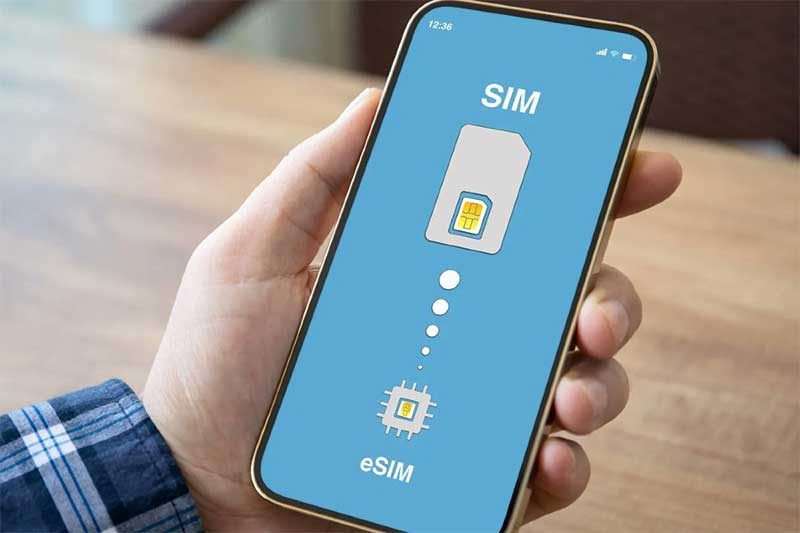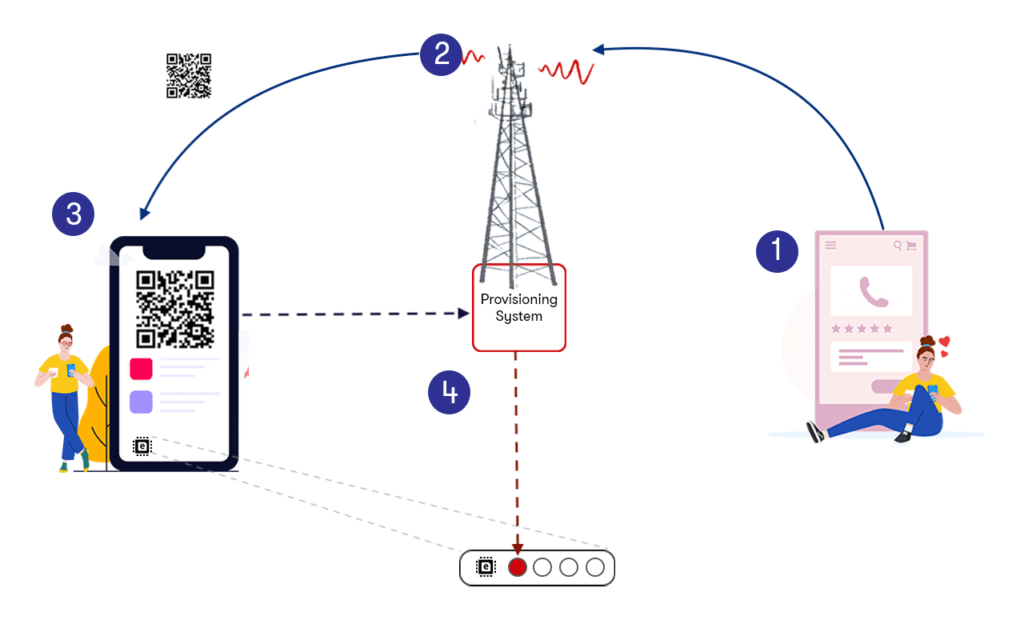eSIMs are changing the way we stay connected, and while they’re super cool, they can still be a bit of a mystery to many. Luckily for you, we’ve got you covered on everything you need to know about eSIMs. Stay tuned to find out exactly: What is an eSIM? How does it work? What are the benefits it offers? and more. Let’s learn and explore the eSIM world together!
What is an eSIM?
eSIM or embedded SIM is a component built into devices such as smartphones and tablets. eSIM works just like a traditional SIM card but without the need to swap it manually. According to the GSMA Intelligence report, it is expected that by 2025, 98% of carriers will offer eSIM and all devices will be equipped with them. This technology simplifies travel connectivity, potentially rendering the process of purchasing a physical SIM card obsolete. eSIM will make travel more straightforward and flexible.

How does an eSIM work?
So you have this useful feature on your phone or tablet. It’s just like a regular SIM card but without having to swap SIMs in and out every time you want to switch service providers.

Now, to get this convenient eSIM working, you’ll need to buy one and pick a data plan. Once that’s sorted, you will receive a QR code via email. Just scan it and your eSIM is ready to roam!
And get this – you can use up to 10 eSIMs on one phone. That means you can switch between different service providers without using multiple annoying physical SIM cards. Whether you’re a backpacker, a business traveler, or just chilling on the beach now and then, eSIM can be a game changer. They save you time, money, and the stress of dealing with a bunch of SIM cards. Isn’t it amazing?
What are the advantages of eSIM?
Switching from physical SIM to eSIM brings countless benefits, transforming how we stay connected and ending unwanted roaming charges. From staying connected on the go to saying goodbye to unexpected charges, here are some ways using an eSIM can truly be a game-changer.

Remote provisioning
One of the outstanding advantages of eSIM technology is the capability for remote provisioning. This means users can activate or switch between mobile carriers without the need for a physical SIM card. This is especially beneficial for frequent travelers, who can seamlessly connect to local carriers without the hassle of obtaining and changing physical SIM cards.
Flexibility and convenience
The flexibility offered by eSIMs is a game-changer. Users can effortlessly switch between mobile carriers and plans without the need for physical SIM card swaps. This not only saves time but also gives users the convenience of choosing the package that best suits their needs at any given time.
Streamlined activation process
Activating an eSIM is a hassle-free process. With just a few clicks, users can activate their eSIM, eliminating the need for inserting a physical card into the device. This simplicity not only saves time but also makes it more accessible for users of varying technical expertise.
Space-saving
The compact nature of eSIM technology contributes to space savings in the device’s design. Without the need for a physical SIM card slot, manufacturers can optimize device layouts. This makes them more efficient and potentially allows for additional features or sleeker designs.
Enhanced security
Security is paramount and eSIM contributes to this by reducing the risks associated with physical SIM cards. With no removable cards, the risk of damage, loss, or theft is minimized. Additionally, remote eSIM provisioning can be done securely, enhancing overall data protection. Further reading: Can eSIM be hacked?
Better integration with IoT devices
The seamless integration of eSIM technology with Internet of Things (IoT) devices is remarkable. This enables efficient connectivity in a variety of smart devices, such as wearables and smart devices, without the need for a physical SIM card slot.
Better for the environment
The shift to eSIMs aligns with environmental concerns. By eliminating the need for physical SIM cards and their associated packaging, eSIMs contribute to a reduction in electronic waste. This eco-friendly aspect makes eSIMs a more sustainable choice in the long run.
What are the disadvantages of eSIM?
Now, you know what an eSIM is. It’s time to learn more about its downside. One significant drawback of eSIM technology is the inconvenience it causes for those who are used to swapping a SIM card between different devices. Unlike the simple process of inserting a physical card, converting an eSIM requires an activation process each time, which can be logistically challenging.
Despite carriers being philosophically okay with this, the practical complexities may still disrupt activation systems. This makes the process of swapping eSIMs between devices less simple than desired.

FAQs
1. Does eSIM use your phone number?
Absolutely! The eSIM technology works just like a traditional SIM card in terms of associating with your phone number. When you activate an eSIM, it is essentially linked to your mobile subscription, complete with your phone number and all the usual functions. So whether you’re using a physical SIM or an eSIM, your phone number is an integral part of your device’s identity, ensuring you stay connected with friends, family, and colleagues. Further reading: How to get an eSIM with a phone number?
2. Do you need the internet for an eSIM?
Yes, to activate and manage an eSIM, you need an internet connection. The initial setup, updates, as well as connecting to mobile networks are all digital processes that depend on internet access. Once activated, an eSIM allows you to use mobile data, make calls, and send messages without needing a constant internet connection, similar to a traditional SIM card. However, for initial setup and ongoing management, internet access is often necessary.
3. Can you call and text with eSIM?
Certainly! With an eSIM, you can make calls and send text messages, just like you would with a traditional SIM card. Once the eSIM is activated, it essentially acts as your virtual SIM, enabling all the communication features you would expect on your device. So whether you’re reaching out to friends, family, or colleagues, or just sending a quick text, eSIM lets you stay connected and in touch seamlessly.
Wrap up
In short, the era of eSIM technology has arrived, so understanding “what is an eSIM” is crucial. It brings with it a wave of innovation and convenience. The transition from physical SIM to embedded SIM marks an important milestone in the evolution of mobile connectivity. As users, manufacturers, and service providers adapt to this change, the benefits of eSIM will undoubtedly shape the future of how we connect and interact with our devices.
















